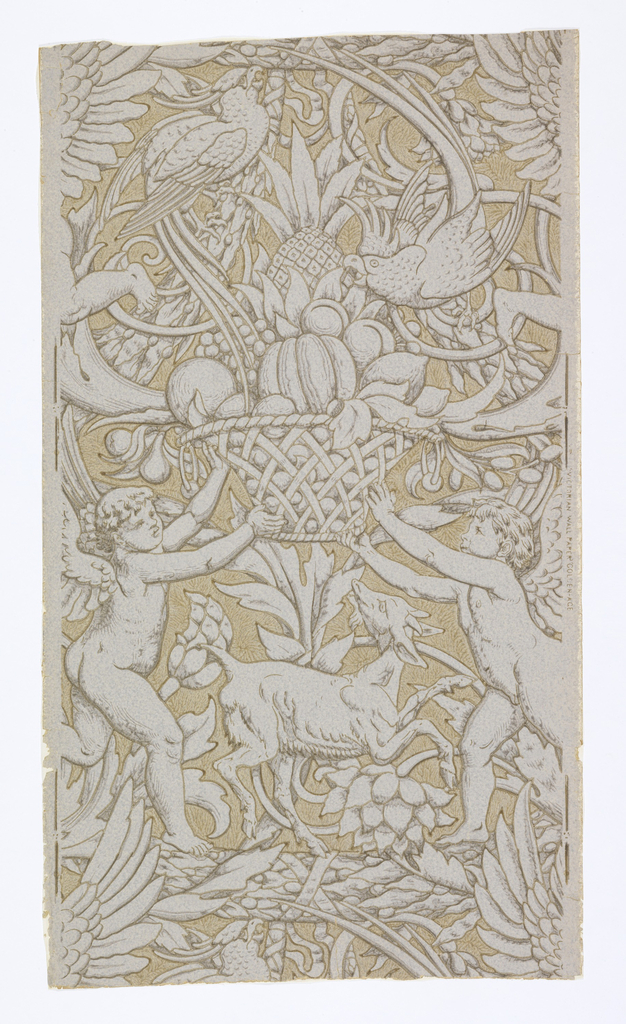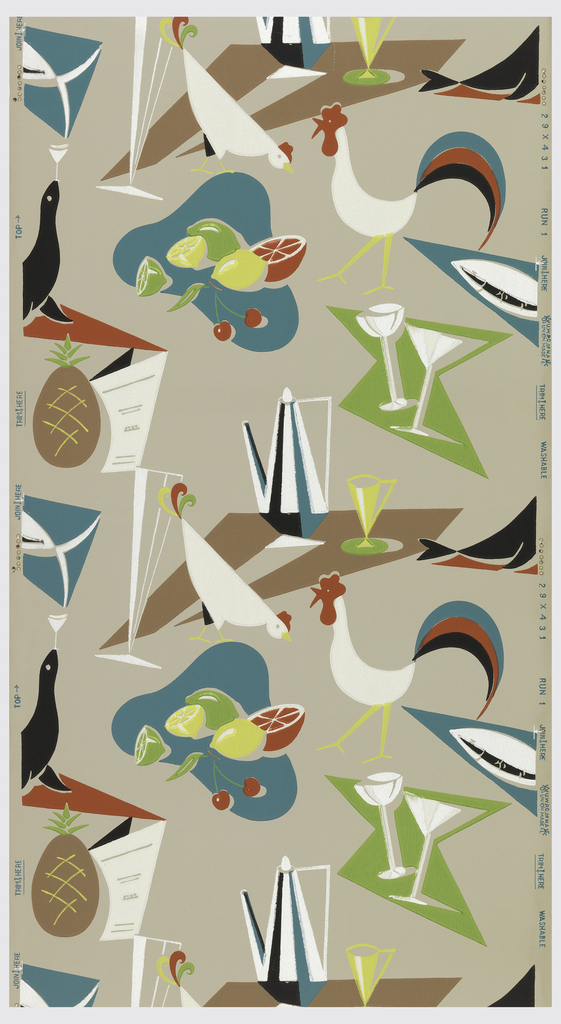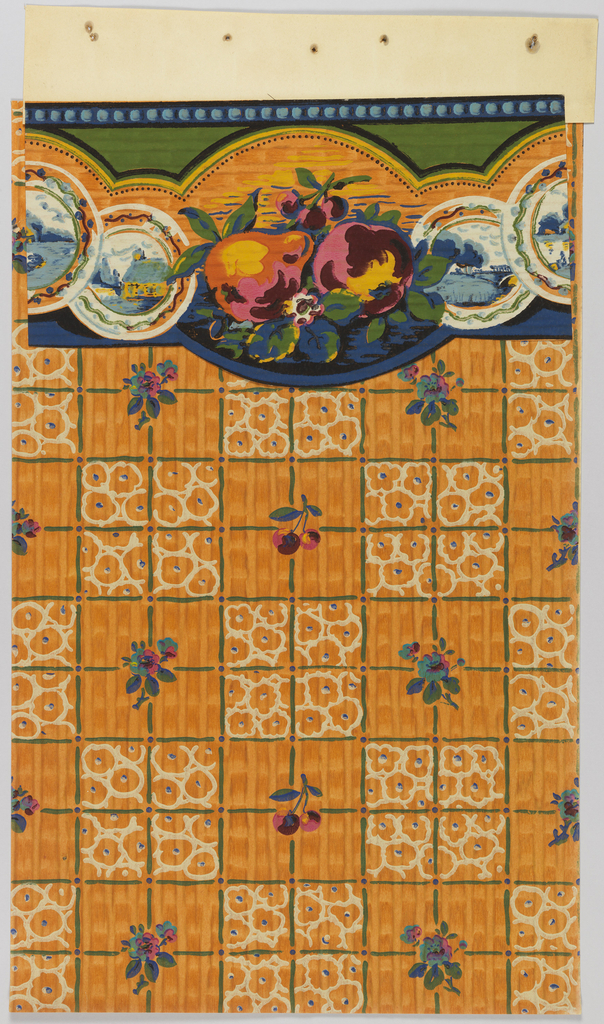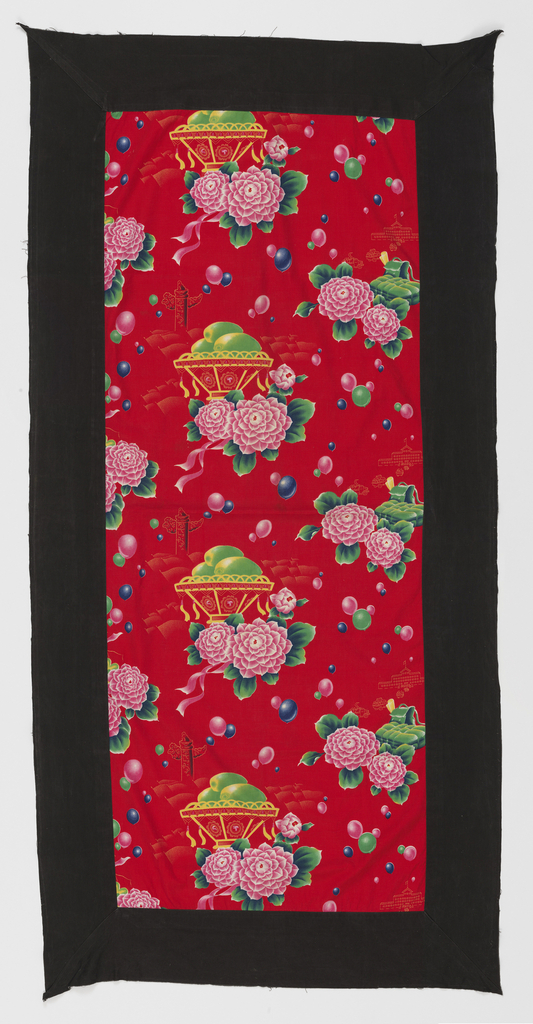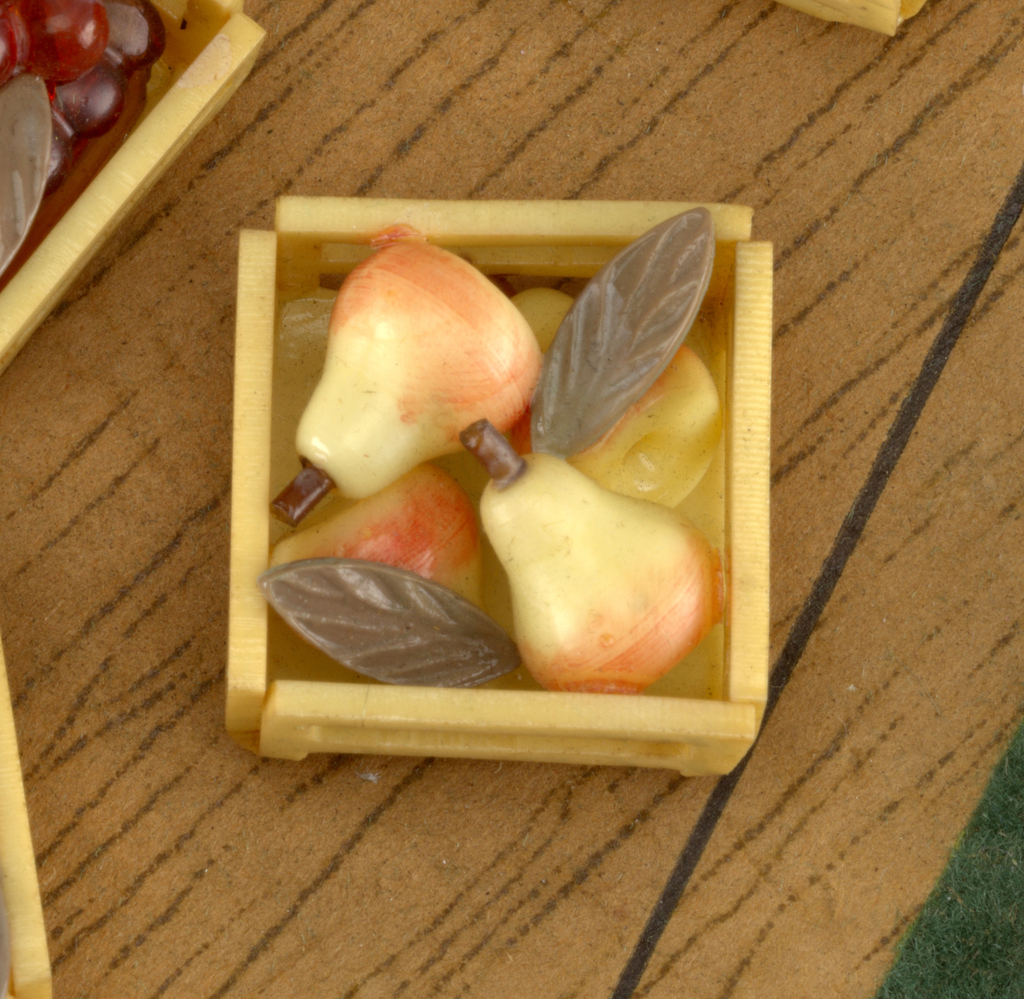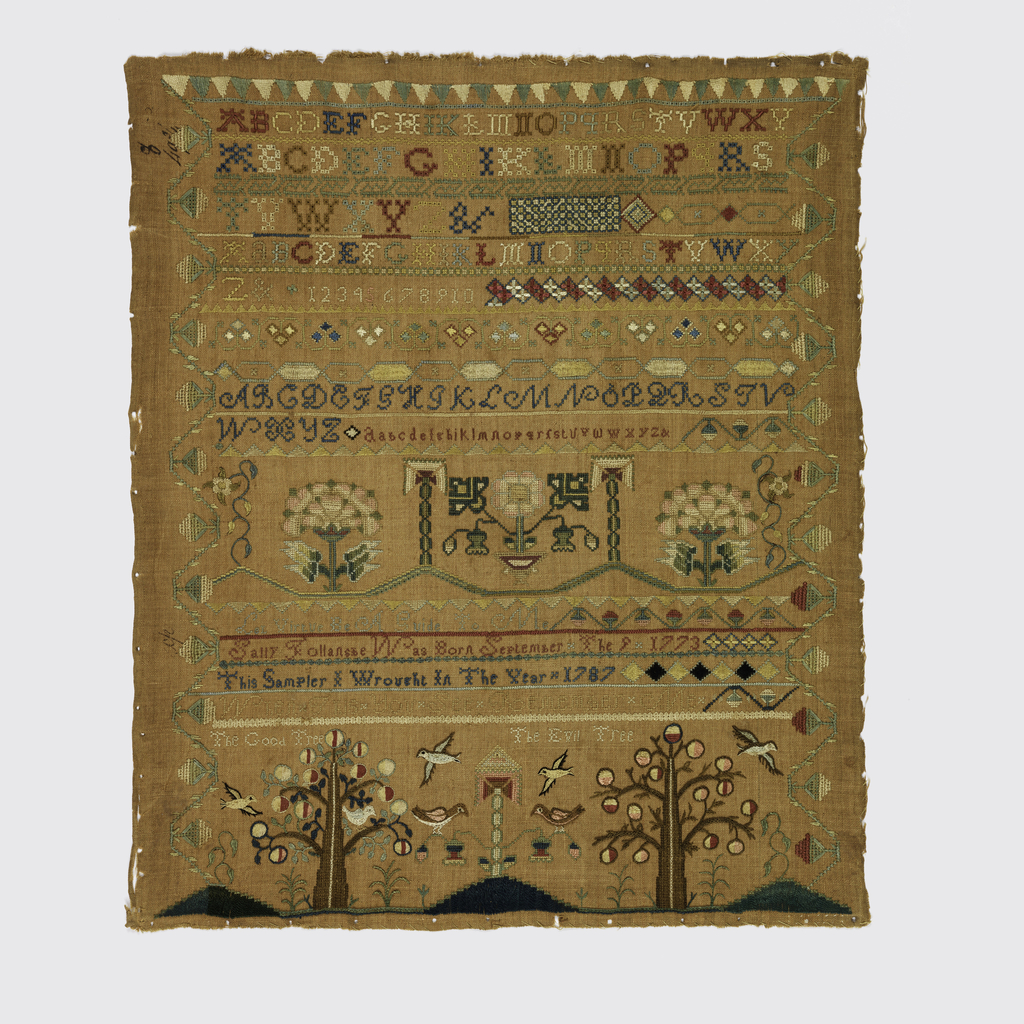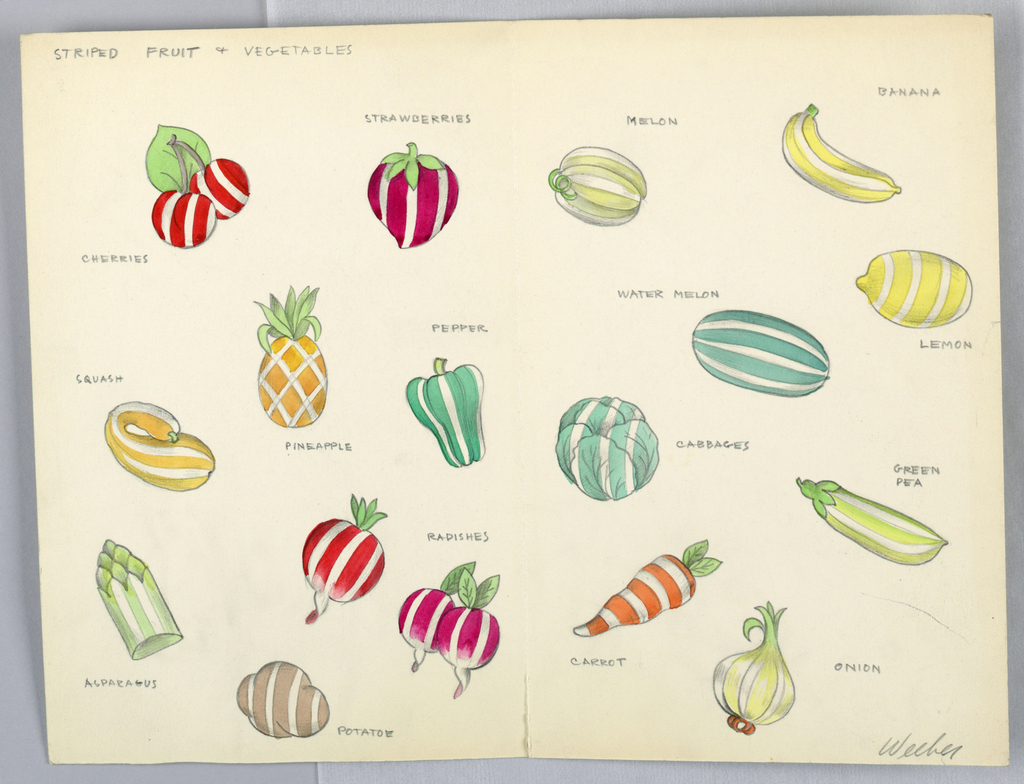The Golden Age is a delightful wallpaper designed by Walter Crane in 1887 and printed by Jeffrey & Co. in London as part of their Victorian Wall-Paper collection. The design contains two winged putti, standing on a large foliate swag, supporting or carrying a large basket of fruit. There are two large birds, maybe cockatoos,...
Author: Anne Regan This pop-culture inspired cocktail paper from the post-World War II era immediately evokes images of the model 1950s suburban home. Its imagery—mostly items used within the kitchen like fruits, coffee, cocktail drinks, and even poultry—reference a variety of trends in 1950s America. The chickens and roosters are representative of fertile animals, a...
This is a perky kitchen paper being shown with its matching cut-out border. Both of these samples are pages that were removed from a wallpaper sample book, one of those huge books used in showrooms that contain the full design. The grid pattern on the wallpaper is reminiscent of ceramic tiles, and while this paper...
This quilt cover features a tasseled basket containing three yellow-green mangoes that refer to the mangoes that Mao Zedong (1893-1976) gave to workers. As leader of China’s Communist Party, Mao received a basket of mangoes as a gift from the visiting Pakistani foreign minister in August 1968. Mao re-gifted the non-native delicacies to a group...
In celebration of The Senses: Design Beyond Vision, this Object of the Day post takes a multisensory approach to an object in Cooper Hewitt’s permanent collection. Jelly candies in the form of fruit? Toys for children? Miniatures? This whimsical and colorful object is actually a button made of celluloid plastic. In an open-topped crate, a...
Sally Follansbee’s 1787 sampler is part of a group of samplers from the towns of Newbury and Newburyport, Massachusetts. These works can be identified by a number of motifs that were reused and modified from the 1750s through the early 1800s. The stylized floral band on Sally’s piece appears on samplers by several Newbury and...
From squash to cherries and peppers to pineapple, Marion Weeber’s button designs are as simple as they are charming. Her evocative shapes, bright colors, and whimsical stripe patterns unify this disparate array of fruits and vegetables, drawn in graphite and painted with watercolor. The buttons themselves were made of individually molded celluloid-a synthetic plastic. Cooper...
